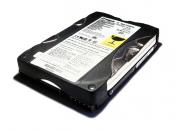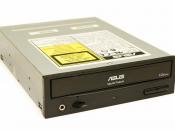Seagate's Hamr (Heat Assisted Magnetic Recording) technology doubles the hard disc densities of hard disks. According to the Winkle article, "One of the key barriers in magnetic storage is the "superparamagnetic limit," a point in which bits are crammed together so tightly that their physical properties interfere with one another causing bits to flip and thus data to corrupt."(CPU, 107). Hamr will heat the medium while recording in order to expand the amount of physical data can be stored on a disc. The theory behind this is "if you apply heat to a particular bit, the bit will temporarily destabilize and the data can be written to or the bit 'flipped'-much more easily by the head using an appropriate magnetic field "(CPU, 107) and the existing data will not be harmed because the laser heat source is such that it can target precisely which bits to heat therefore causing bits to stabilize.
HAMR Technology will not be commercially viable until 2010 and current applications limit it to 1TB per square inch which is still a big leap compared to 60 per square inch hard disc technologies used by other companies. According to the company servers can no hold as much as 5.7 TBs in capacity compared to today's 70 GB's.
This is the Seagate press release version of the introduction of this new technology, "HAMR technology will significantly extend the capacity of modern magnetic disc drives that use magnetic heads to read and write digital data onto spinning discs. If the storage density (the number of data bits stored on a given disc surface) continues its phenomenal growth rate, within the next five-to-ten years the data bits will become so small that they may become magnetically unstable due to a phenomenon known as superparamagnetism. The solution...


